In forex trading, the multiple time frames allow investors to know the broader market overview. As a result, multi time frame traders can perform trading in the most secure environment. The FX market is dominated by prominent financial institutes that usually focus on higher time frames.
Therefore, when we see the market in the time frames like daily or weekly, we can see what big players are doing. On the other hand, using a lower time frame allows taking trades with a better risk vs. reward ratio. In that case, the combination of a higher and lower time frame is a process to follow an accurate direction with better risk management.
The following section will see how to find the best time frame in trading with a complete short-term and long-term trading strategy based on multiple time frame analyses.
How to identify the best time frame?
Imagine you are a scalper, and you are focusing too much on the daily market trend. Therefore, it is clear that you might be accurate in finding the long-term market direction, but you intend to make money from short-term price fluctuation.
So, finding a suitable time frame is vital in any trading method. Let’s how to match the perfect time frame with your trading strategy.
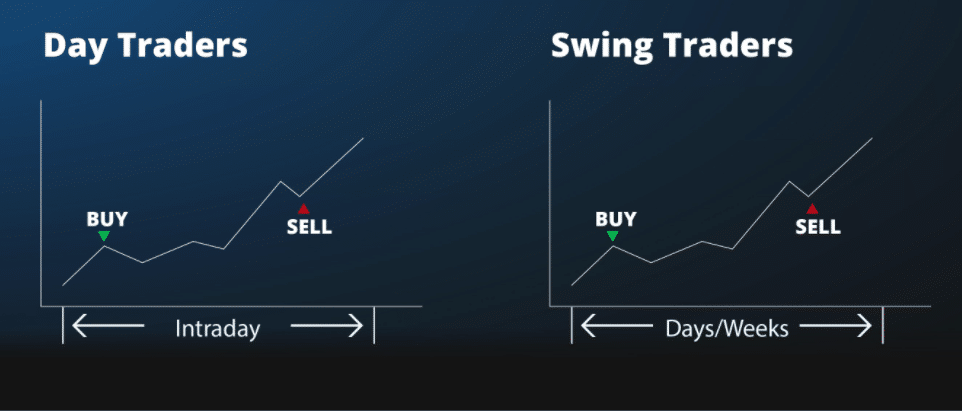
Swing trader
The main aim for swing traders is to identify the market trend and follow the direction from swing low or swing high. For example, the price in a currency pair moves like a zig-zag that allows trading opportunities from swing levels.
On the other hand, the concept of fractal says that the price behavior is almost the same in all time frames. Therefore, the swing in the 1-minute chart has the same behaviors as the swing from the daily chart.
The most considerable flexibility of swing traders is that they can roam any time frame to find the price swings. However, based on the success rate and prominent investors’ suggestions, most swing traders deal on 15 minutes to the daily chart. Therefore, it is better to stick within 15 minutes to 1-hour charts to catch the intraday swings. On the other hand, H4 and daily charts are suitable to catch the daily swing.
Day trader and scalper
The main aim of day traders is to benefit from intraday price fluctuations where they don’t like to keep their trade open overnight. Therefore, they usually stick to one minute, five minutes, 15 minutes, and even hourly charts.
There is no alternative to using a minutes chart to see the intraday move but day traders and scalpers are usually multi-time-frame traders who find the direction from higher time frames. Therefore, using H4 for daily charts is good to see the market direction and 1-minute to 15-minute charts to open and close trades.
Long-term traders
Long-term traders follow an investment mindset that does not care about what is happening in the lower time frame. They consider the intraday swing as a market noise that usually doesn’t have any value. Any uncertain market movement shows the price direction once the daily candle closes.
Therefore, long-term traders pay extra attention to the daily chart as it covers the sentiment from all sessions. On the other hand, multi-timeframe traders also focus on monthly and weekly charts to understand the market context.
A short-term strategy
In this section, we will see a complete trading strategy using multiple time frames. As it is a short-term trading method, we will not move above the H4 trend. However, it is a day trading method that needs an active trading session, usually the London or New York session.
First, we will find the tr and open trades trend direction based on the m15 price action. Moreover, we will use intraday support-resistance levels, candlestick formation, and supply and demand. From indicators, we will use 100 SMA, 20 EMA and Traders Dynamic Index. When all indicators show the same direction, we will open the following trade conditions shown below:
Bullish trade setup
- The H1 trend is bullish, and the market appears in the London session.
- The price is above the 100 SMA in 15 minutes, where TDI shows a buy direction.
- The price moves above any vital support level, and a bullish candle closes above the 20 EMA.
- The entry is valid after a bullish close above the 20 EMA, where the stop loss and take profits are based on near-term swings.
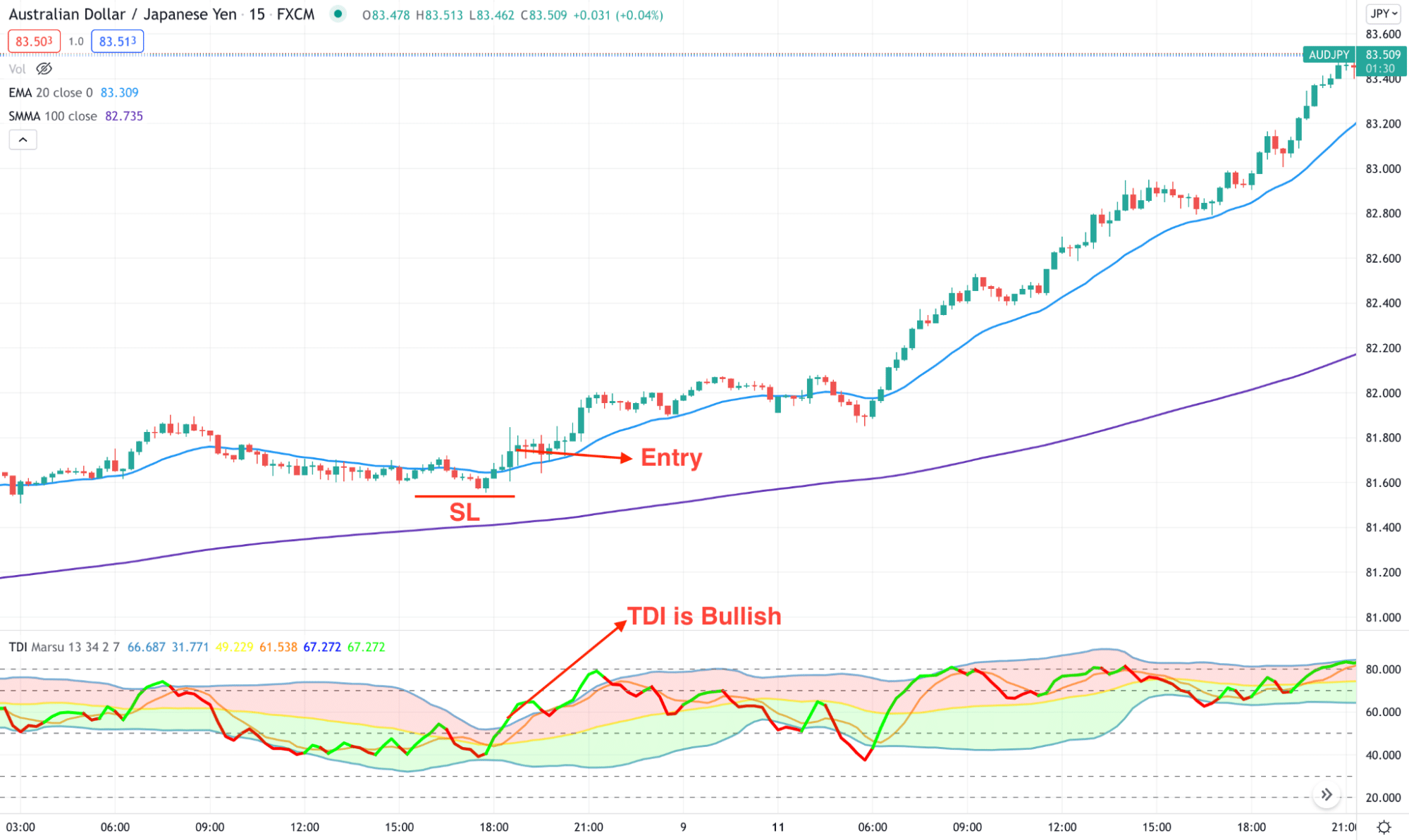
Bearish trade setup:
- The H1 trend is bearish, and the market appears in the London session.
- The price is below the 100 SMA in 15 minutes, where TDI shows a bearish direction.
- The price moves below any vital resistance level, and a bearish candle closes below the 20 EMA.
- The entry is valid after a bearish close above the 20 EMA, where the stop loss and take profits are based on near-term swings.
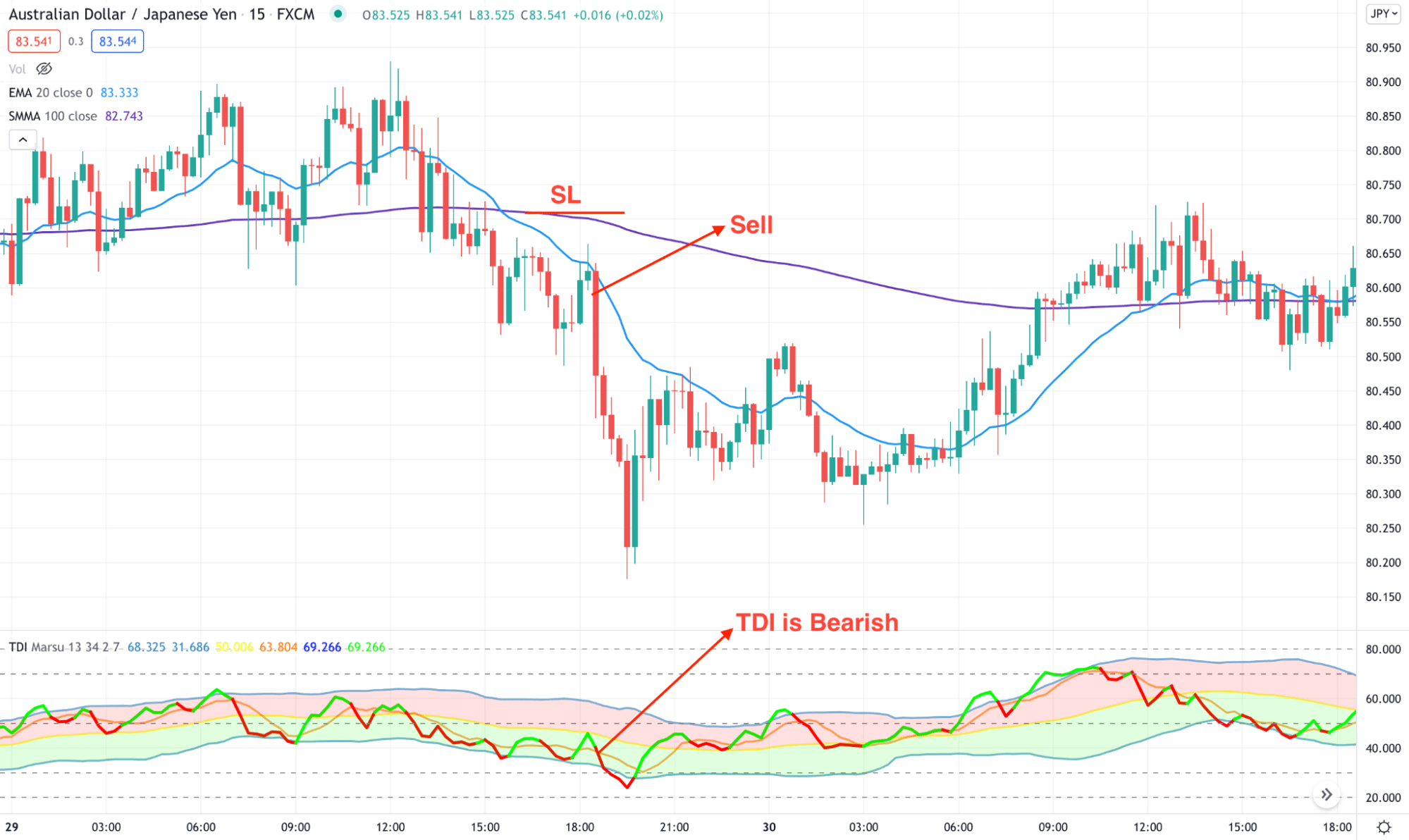
A long-term strategy
As it is a long-term method, we will ignore what is happening in the lower time frame and focus on the long-term trends. In that case, we will find the market directly from the daily and weekly charts and follow the direction in the H4 time frame.
Moreover, we will consider 200 SMA to find the broader market direction and 50 EMA to catch the short-term trend. Finally, in the oscillators section, we will use MACD to match the MA’s direction.
Bullish trade setup
- The daily trend is bullish, and the market moves above any vital support level.
- The price is above the 200 SMA in the H4 chart.
- A candle moves above the 50 EMA while the MACD histogram turns bullish.
- The entry is valid after a bullish close above the 50 EMA, where the stop loss and take profits are based on near-term swings.
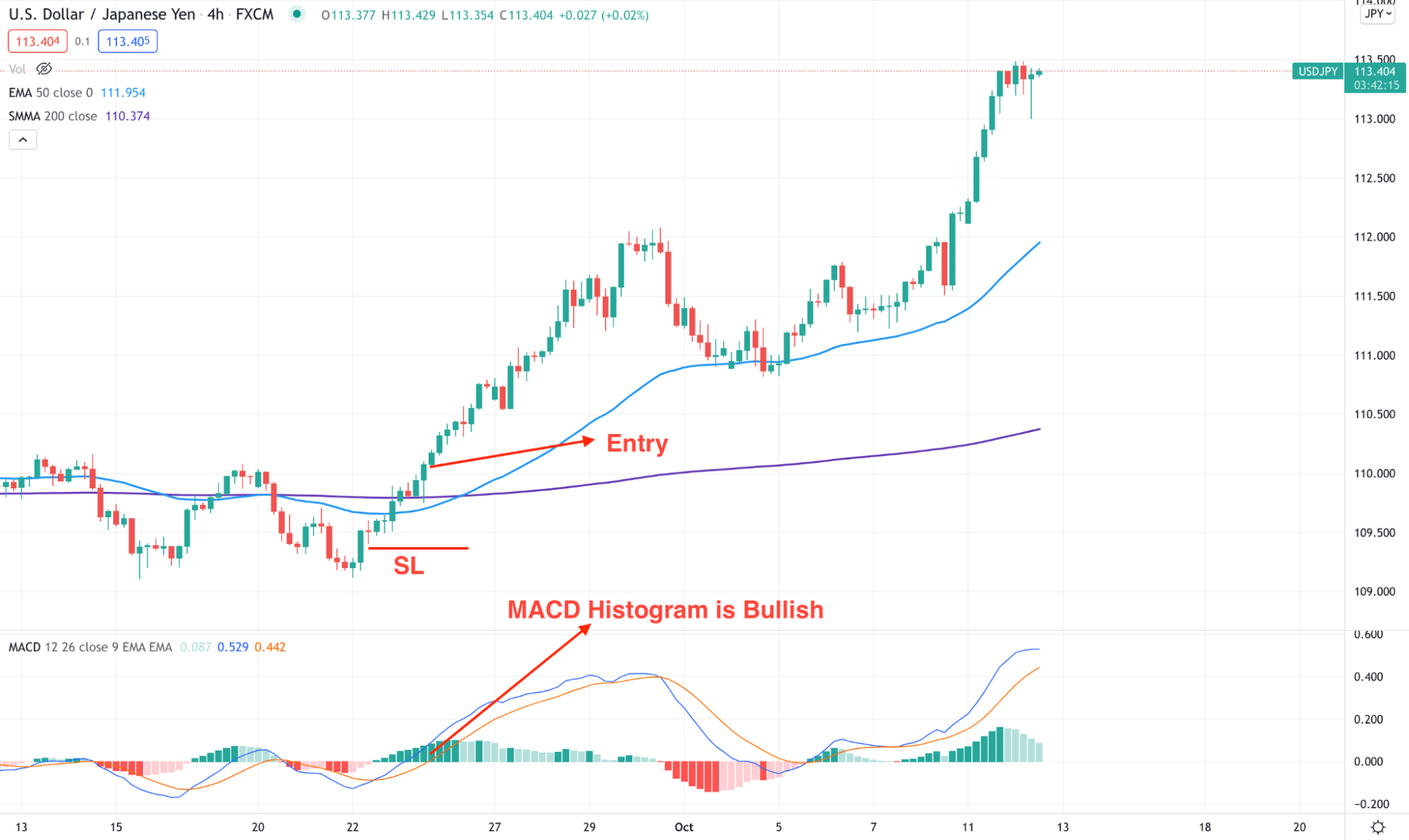
Bearish trade setup
- The daily trend is bearish, and the market moves below any vital resistance level.
- The price is below the 200 SMA in the H4 chart.
- A candle moves below the 50 EMA while the MACD histogram turns bearish.
- The entry is valid after a bearish close below the 50 EMA, where the stop loss and take profits are based on near-term swings.
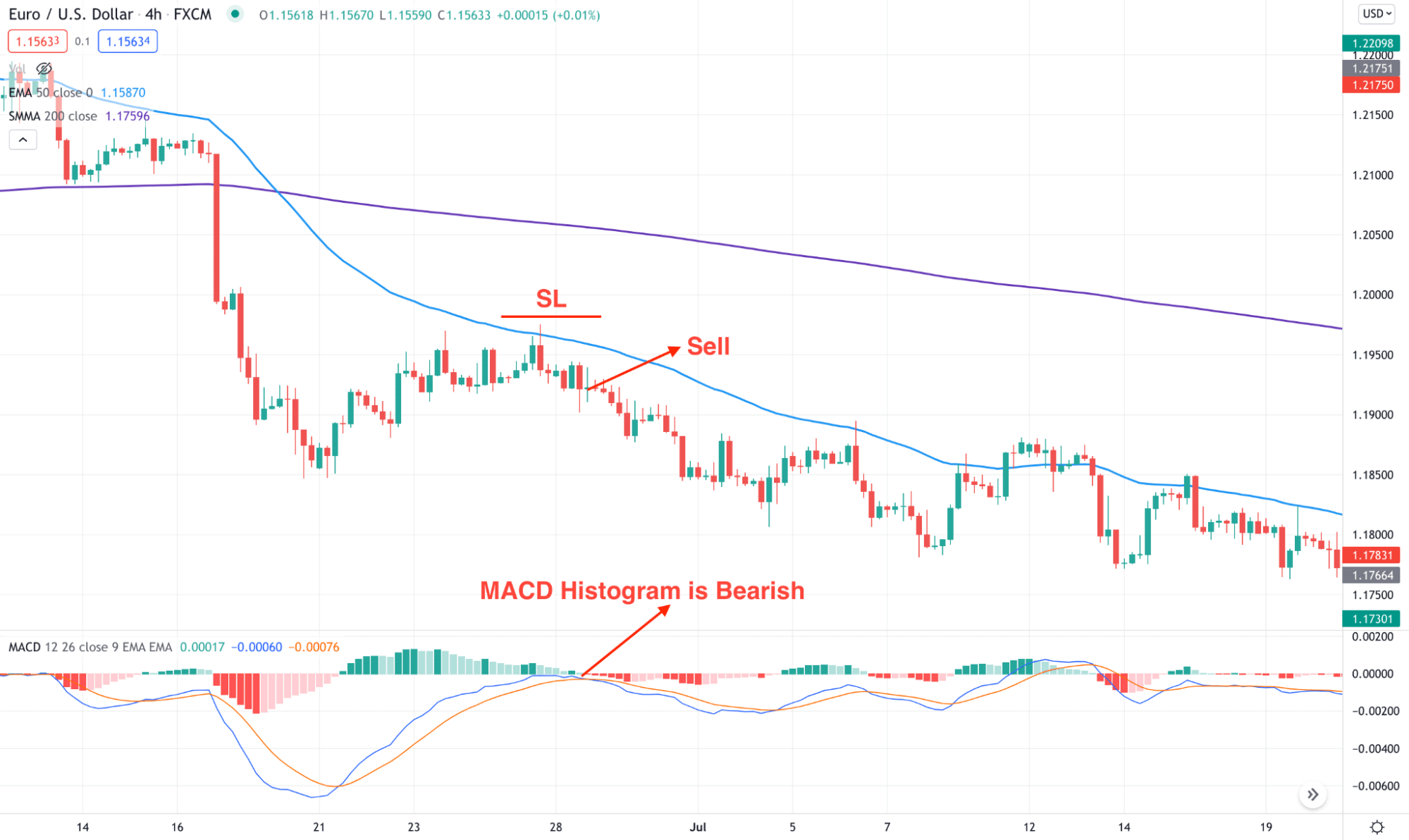
Pros & cons
Let’s find the pros and cons of multiple time frame trading.
| Pros | Cons |
| It has higher accuracy than fixed time frame trading. | It is hard to match the higher and lower time frame direction. |
| Trades can see what is happening in both lower and higher time frames. | The number of trades is lower than single time frame trading. |
| When the short-term and long-term trend matches the direction, it becomes the most effective swing. | Traders often become confused about finding the accurate direction. |
Final thoughts
Multiple time frame trading is an excellent way to trade in the financial market. Although it helps increase trading accuracy by combining the short-term and long-term direction, it requires attention to risk management.
In forex trading, we always anticipate the market direction that has a possibility of making mistakes. So, your success depends on how you are managing your trades with a risk management system.




